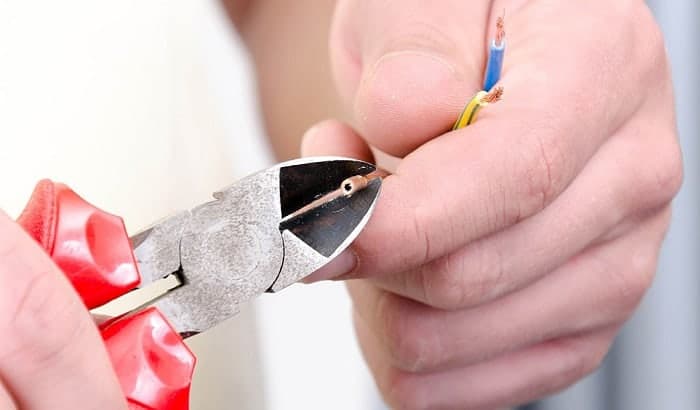Cutter is the name given to hand tools that are used for the purpose of cutting a wide array of different materials. An average pair of cutters comes with two levels that a fulcrum fixes together from its position near to one particular end. The jaws are the shorter part of the cutter with the handles being the longer section.
Cutters are very useful for a number of different applications, including the cutting of wire mesh, and can also work with materials that are sometimes too small for fingers to get a proper hold on.
Common uses of cutters
Cutters are often used for cutting wires, nails and screws and on some occasions wire mesh.
The best cutters to use on wires are side cutters, which are commonly used in the electronics industry in addition to stripping insulation. The stripping of wires refers to the safe removal of the outer layer of armour on wires without damaging the conductors that lay beneath. If those conductors do get nicked, it could cause the connection to break or even an electrical shock. Although a knife can be used to strip a wire there is an increased risk of catching or damaging the copper.
Bolt cutters are the best cutters to use for cutting nails and screws. The tool should be positioned at the deepest position that can be reached on the shank of the nail or screw or, if the shank cannot be reached because it has been too tightly fastened, instead snip off the head.
For cutting wire mesh there are a number of cutters that can be used including snips, hacksaws, angle grinders and power shears.
Snips are common and inexpensive, and most contractors will possess some. They are excellent for cutting wire mesh and thin sheets and can even manage delicate curves though particularly hard metals may cause issues at lower gauges and snips can sometimes leave burrs.
Hacksaws are also very common and ideal for thicker gauges that snips could have difficulty with, though blades can be chewed up by harder metals very easily. It is difficult to achieve a curved shape when using a hacksaw and the blade will determine the finish.
Angle grinders are powered and portable and can take on considerably thicker gauges. A good curved result is still difficult to get but can be achieved by experienced users and they are efficient and fast with fairly clean cuts.
Small power shears take little bites from the metal when the tool is manoeuvred along the desired path. Proper steering requires some elbow grease but power shears can cut out complex shapes with practice. The resulting serrated edge will need careful handling.
Wire mesh can also be cut with benchtop cutting tools, lasers, plasma cutters and punch presses.
There are many different types of cutters available depending on the particular application they are to be used for. Cutters come in a wide array of different sizes and also come with a range of pincers and joints, with the three most basic types consisting of adjustable, non-adjustable and locking.



